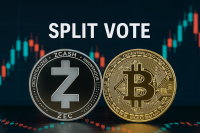Bitcoin has repeatedly failed to break through new overhead resistance levels, despite renewed institutional interest and broad market momentum. With the cryptocurrency asset unable to sustain gains above major thresholds, the situation merits a deeper look at the structural and behavioural factors holding it back.
Market Reaction: Resistance Zones and Liquidity Frictions
Currently, Bitcoin (BTC) is trading around $103,000 to $104,000, facing resistance near $106,000–$108,000 after several failed attempts to clear that zone. Recent data shows that after reaching the $106,000 mark, BTC retraced and failed to maintain momentum, while its monthly RSI remains moderate rather than entering overbought territory. One key reason is liquidity friction: large sell‑orders surface at key resistance levels, creating a “ceiling” effect. For example, the 85th percentile cost basis model places resistance around $108,500, historically capping recovery attempts. Without enough fresh buying to offset these sell walls, upward breakouts remain elusive. That suggests that although demand exists, near‑term supply from longer‑term holders and profit‑taking behaviour is still sufficient to cap upside.
Regulatory & Macro Implications: Dollar Strength and Institutional Flow Dynamics
A strengthening U.S. dollar index (DXY) has been inversely correlated with Bitcoin price, and recent upticks in DXY are coinciding with BTC’s struggle. As dollar strength rises, risk assets like Bitcoin often come under pressure. Meanwhile, although institutional flows into spot Bitcoin exchange‑traded products continue, these inflows alone are not translating into sustained price breakthroughs. For instance, net inflows into Bitcoin‑related ETFs remain in the hundreds of millions, but the broader momentum for a breakout is missing. This suggests that macro fundamentals and regulatory headwinds may be acting as a dampener, inhibiting the kind of broad‑based breakout that typically accompanies past cycles.
Investor Sentiment & Strategic Perspective: Dormant Holders, Rotation and Market Psychology
Investor behaviour is shifting. On‑chain metrics show long‑dormant Bitcoin holders moving large sums to exchanges—such moves raise questions about confidence levels and increasing profit‑taking. At the same time, traders appear rotating capital into smaller, high‑momentum tokens (such as privacy‑coins) even as Bitcoin hordes remain intact and well‑distributed. The short‑term holder to long‑term holder (STH/LTH) supply ratio has climbed above historical norms, implying speculative trading dominates current flows and limiting sustained accumulation by long‑term investors. The combined effect is a market where many participants are positioned defensively, waiting for clearer signals before committing large incrementals, which in turn limits breakout traction.
Looking ahead, investors and institutions should monitor whether the resistance range around $107,000–$108,000 gives way, whether institutional inflows accelerate meaningfully, and how macro‑dynamics (especially dollar strength and interest‑rate policy) evolve. The interplay of large‑holder selling pressure, speculative rotation, and external economic conditions suggests that breaking through major resistance will require a coordinated push rather than incremental strength alone.












Leave a comment